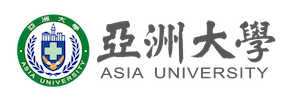Introduction of Department

History
The department was established on August 1, 2001, and was known as the Department of Information Management. This department is one of the ten pioneer departments included in Asia University. Moreover, this department included an undergraduate program, a 2-year post-associate program, and an on-job extension education two-year program. A master’s program was included in the department in 2003 and the aforementioned 2-year programs were terminated in 2004. Because of the rapid development in scientific technology and sociology in the department, the name of the department was changed to the Department of Information Science and Applications. Moreover, because of the requirement of teaching students to adapt to rapidly changing social and industrial environments and the large demand for multimedia technology, the name of the department was changed to the Department of Informatics and Multimedia Applications. The name was finalized in 2015 as the Department of M-Commerce and Multimedia Applications, and this department included bachelor’s and master’s programs.
Goal and Development
The department upholds the concept of "pragmatic information, media applications, social care" to nurture the students with the capability of operational management and multimedia applications as well as the adaptive to the advent of the era of knowledge-based society. The curriculum focus on the multimedia technology as well as the multimedia application and design. The students will have the expertise in multimedia design based on the manipulation of computer software tools. The students will not only know how, such as how multimedia technology works, but also know why, such as the basic theory of multimedia process theory. Finally, they will have the hand-on skill for system implementation. Moreover, to strengthen the practical application of the combination of professional computer laboratories and the internship courses, it will train the students with both theoretical and practical hand-on capability. It also encourages students to pursue the professional certificates, so that they may easily find the suitable and decent jobs after graduation. With a solid academic background and technical knowledge that fit the requirement of the suitable job positions, the students will have the knowledge of system integration, operations, and maintenance of multimedia.



